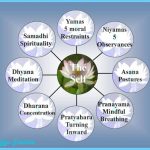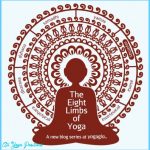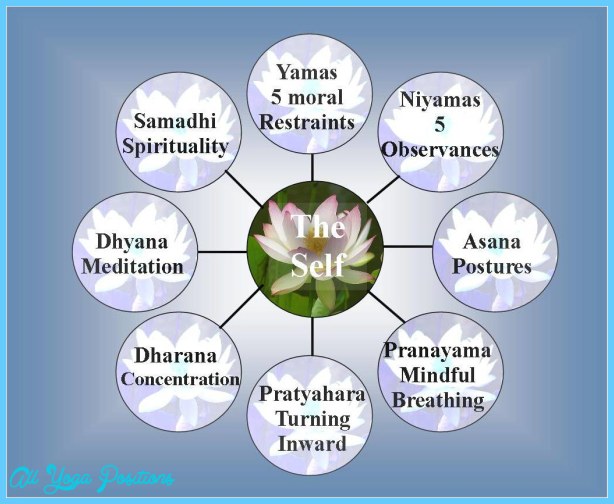These eight limbs, known as angas, are a progressive series of disciplines; they are not, however, prerequisites to practice yoga. Great so why mention them?
Because the eight limbs are yoga’s ethical blueprint, the moral codes of a vast tradition. Many who practice yoga want to know more about the philosophy and spiritual content contained within these interdependent guidelines which focus on ethics, attitudes, and interactions.
The eight limbs are prescriptives to cultivate body, mind, and spiritual awareness and to examine habitual attitudes, behaviors, and reactions if you choose to do so. The limbs are not linear, but intertwine, much the way branches do in a forest. The require discipline and concentration. If you thrive on instant gratification, some of the limbs that require dedication will seem as foreign as cold soup for breakfast. On the other hand, if you consider yourself a relatively moral being, you may already practice some of the limbs; they are universal.
Yama
This limb examines social behavior and is the foundation for all the other practices. The five yamas are nonviolence; truth and honesty; nonstealing and forbearance; moderation; and nonpossessiveness.
Niyama
The limb examines inner discipline and responsibility. The five niyamas are purity; contentment; austerity; study of the sacred text; and living with an awareness of the Divine.
This limb is solely concerned with maintaining steadiness and control of the body. Asana prepares the body for meditation. Ancient yogis realized that in order to sit and contemplate, the body needed to be supple and cooperative.
The vehicle for meditation, pranayama is the breath, and it helps maintain equilibrium in the body.
Note: Asana and pranayama will be part of any hatha yoga class. The following four limbs evolve sequentially and require practice.
Pratyahara
This limb deals with withdrawing the senses in order to still the mind. Pratyahara happens during meditation, when the senses are not stimulated.
Dharana
This limb strives to fix the mind on one point or image. When this happens, the mood is set for the seventh limb.
Dhyana
This is uninterrupted meditation without an object. Inner dialogue disappears and the mind is keenly focused.
Samadhi
This is when all the limbs work. There are no impediments to block your path.






